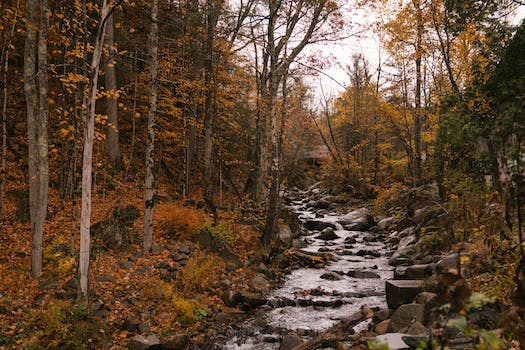Gun Violence in Chicago: A Look at the Statistics in April 2013
In April 2013, Chicago experienced a surge in gun violence that left many residents and officials concerned. The city had already been grappling with high levels of gun violence for years, but the numbers in April were particularly alarming.
According to data from the Chicago Police Department, there were 53 homicides in the city in April 2013, a 45% increase from the same month in the previous year. In addition, there were 226 shootings, a 53% increase from the previous year. These numbers were especially troubling given that April is typically a month with lower levels of violence compared to the summer months.
The majority of the violence occurred in the city’s South and West sides, which have long been plagued by poverty, unemployment, and gang activity. Many of the victims were young African American men, and the shootings often occurred in broad daylight on busy streets.
The spike in violence prompted a response from city officials, including Mayor Rahm Emanuel and Police Superintendent Garry McCarthy. They announced a number of measures aimed at curbing the violence, including increased police patrols in high-crime areas, the deployment of specialized units to target gang activity, and the use of technology to track and respond to gunfire.
However, these measures were met with skepticism by some residents and community leaders, who argued that they did not address the root causes of the violence. They pointed to the need for more investment in education, job training, and social services in the city’s most disadvantaged neighborhoods.
The violence in April 2013 also drew national attention, with many media outlets highlighting the issue and calling for action. Some commentators pointed to Chicago’s strict gun laws as evidence that gun control measures were not effective in reducing violence. Others argued that the problem was not the laws themselves, but rather the lack of enforcement and the easy availability of guns in neighboring states with more lax laws.
The debate over gun violence in Chicago continues to this day, with some progress made in reducing the numbers in recent years but still a long way to go. The city has implemented a number of initiatives aimed at reducing violence, including community-based programs, increased investment in social services, and partnerships with law enforcement agencies at the local, state, and federal levels.
Despite these efforts, however, Chicago remains one of the most violent cities in the United States, with high levels of gun violence continuing to disproportionately affect communities of color. The issue remains a complex and multifaceted one, requiring a comprehensive approach that addresses not only the symptoms but also the underlying causes of violence in the city.
The Boston Marathon Bombing and its Impact on Chicago’s Security Measures
In April 2013, the city of Chicago was rocked by the news of the Boston Marathon bombing. The attack, which occurred on April 15th, left three people dead and over 260 injured. The incident sent shockwaves throughout the country, and Chicago was no exception. In the aftermath of the bombing, the city took a hard look at its own security measures and made some significant changes.
One of the most notable changes was the increased presence of law enforcement officers at public events. In the weeks and months following the bombing, Chicago police officers were deployed to major events such as the Chicago Marathon and the Taste of Chicago. The goal was to provide a visible deterrent to potential attackers and to reassure the public that their safety was a top priority.
Another change was the implementation of new security protocols at public venues. This included increased bag checks and metal detector screenings at major sporting events and concerts. The city also invested in new technology, such as surveillance cameras and license plate readers, to help law enforcement better monitor public spaces.
The changes were not limited to public events and venues. The Chicago Police Department also increased its focus on intelligence gathering and analysis. This included working closely with federal agencies such as the FBI and the Department of Homeland Security to identify potential threats and prevent attacks before they could occur.
The impact of these changes was felt throughout the city. While some residents were initially skeptical of the increased security measures, many came to appreciate the efforts of law enforcement to keep them safe. The increased police presence at public events was seen as a reassuring presence, and the new security protocols were generally accepted as a necessary inconvenience.
However, there were also concerns about the potential for overreach and the erosion of civil liberties. Some critics argued that the increased surveillance and intelligence gathering could lead to abuses of power and violations of privacy. Others worried that the focus on preventing terrorist attacks could distract law enforcement from other important issues, such as violent crime and police brutality.
Despite these concerns, the changes implemented in the wake of the Boston Marathon bombing have largely remained in place. The city of Chicago continues to prioritize public safety and invest in new technologies and strategies to prevent attacks. While there have been no major terrorist incidents in the city since 2013, the threat of terrorism remains a constant concern for law enforcement and the public alike.
In conclusion, the Boston Marathon bombing had a significant impact on Chicago’s security measures. The city responded with increased police presence, new security protocols, and a greater focus on intelligence gathering and analysis. While these changes were generally accepted as necessary, there were also concerns about the potential for overreach and the erosion of civil liberties. Despite these concerns, the city of Chicago remains committed to keeping its residents safe and preventing future attacks.
Chicago Teachers Union Strike: What Happened and Why
In April 2013, the city of Chicago was rocked by a teachers’ strike that lasted for seven days. The Chicago Teachers Union (CTU) called for the strike, which affected over 350,000 students in the city’s public schools. The strike was the first of its kind in Chicago in 25 years, and it was a major event that had a significant impact on the city’s education system.
The CTU called for the strike in response to a number of issues, including pay, job security, and working conditions. The union was also concerned about the city’s plan to close dozens of schools, which would have resulted in the loss of thousands of jobs for teachers and other school staff.
The strike began on April 1, 2013, and it quickly became clear that it was going to be a long and contentious battle. The CTU and the city’s school board were unable to reach an agreement on a new contract, and negotiations continued for several days.
During the strike, teachers and other school staff picketed outside of schools across the city, and many parents were forced to find alternative childcare arrangements for their children. The strike also had a significant impact on the city’s economy, as many businesses were forced to close or reduce their hours due to the lack of customers.
Despite the challenges, the CTU remained committed to their cause, and they continued to negotiate with the city’s school board. Finally, on April 7, 2013, the two sides reached a tentative agreement on a new contract.
The new contract included a number of important provisions for teachers and other school staff, including pay raises, job security, and improved working conditions. The contract also included a provision that prevented the city from closing any schools for at least five years.
The CTU hailed the agreement as a major victory for teachers and other school staff, and they ended the strike on April 9, 2013. The strike was a major event in the city’s history, and it highlighted the importance of teachers and other school staff in the education system.
In the aftermath of the strike, there were many discussions about the future of education in Chicago. Some people argued that the strike had been a necessary step to ensure that teachers and other school staff were treated fairly, while others criticized the CTU for disrupting the education of hundreds of thousands of students.
Despite the controversy, the strike had a lasting impact on the city’s education system. It brought attention to the challenges faced by teachers and other school staff, and it helped to ensure that their voices were heard in the ongoing debate about education reform.
Overall, the Chicago Teachers Union strike of April 2013 was a significant event in the city’s history. It highlighted the importance of teachers and other school staff in the education system, and it demonstrated the power of collective bargaining to achieve important goals. While the strike was a difficult and contentious battle, it ultimately resulted in a new contract that provided important benefits for teachers and other school staff, and it helped to shape the future of education in Chicago.
The Chicago Blackhawks’ Road to the Stanley Cup Playoffs in April 2013
In April 2013, the Chicago Blackhawks were on a mission to make it to the Stanley Cup playoffs. The team had a strong regular season, finishing with a record of 36-7-5, and they were determined to carry that momentum into the postseason.
The Blackhawks’ success in April was due in large part to their strong defense. Led by defenseman Duncan Keith, the team allowed just 97 goals in the regular season, the fewest in the NHL. Keith was a key player for the Blackhawks throughout the month, recording six assists and a +7 plus/minus rating.
Offensively, the Blackhawks were also firing on all cylinders in April. Patrick Kane, Jonathan Toews, and Marian Hossa all had strong performances, combining for 16 goals and 22 assists in the month. Kane, in particular, was a standout player, scoring six goals and adding eight assists in just 12 games.
The Blackhawks’ road to the playoffs was not without its challenges, however. In early April, the team suffered a setback when goaltender Corey Crawford was sidelined with an injury. Backup goaltender Ray Emery stepped up in Crawford’s absence, however, and played a key role in the team’s success down the stretch.
Despite the injury to Crawford, the Blackhawks continued to dominate their opponents in April. They won eight of their 12 games in the month, including a 7-1 victory over the Detroit Red Wings on April 12th. The team’s strong play earned them the top seed in the Western Conference playoffs.
The Blackhawks’ success in April was a testament to their depth and resilience as a team. Even when faced with adversity, they were able to come together and continue to play at a high level. This bodes well for their chances in the playoffs, where they will face some of the toughest competition in the league.
As the playoffs approached, the Blackhawks remained focused on their ultimate goal: winning the Stanley Cup. They knew that the road ahead would be challenging, but they were confident in their ability to rise to the occasion.
In the end, the Blackhawks’ hard work and determination paid off. They went on to win the Stanley Cup, defeating the Boston Bruins in six games in the finals. It was a historic moment for the team and for the city of Chicago, and it was a testament to the Blackhawks’ talent, teamwork, and resilience.
Looking back on April 2013, it is clear that the Blackhawks’ success was no accident. It was the result of months of hard work, dedication, and teamwork, and it was a testament to the team’s talent and resilience. As the team looks ahead to future seasons, they can take pride in their accomplishments and use them as motivation to continue to strive for greatness.
Chicago’s Cultural Scene in April 2013: Highlights and Events
In April 2013, Chicago’s cultural scene was buzzing with a variety of events and highlights. From music festivals to art exhibitions, the city had something for everyone.
One of the most notable events was the Chicago International Movies and Music Festival (CIMMfest). This four-day festival celebrated the intersection of music and film, showcasing a diverse range of films and live performances. The festival also included panel discussions and workshops, providing a platform for industry professionals to share their insights and experiences.
Another highlight of April 2013 was the Chicago Comic & Entertainment Expo (C2E2). This three-day event brought together comic book enthusiasts, gamers, and pop culture fans from all over the world. Attendees had the opportunity to meet their favorite comic book artists and writers, participate in gaming tournaments, and attend panels featuring industry experts.
For those interested in the visual arts, the Art Chicago exhibition was a must-see. This annual event featured contemporary and modern art from galleries around the world. The exhibition also included special installations and performances, making it a truly immersive experience.
Music lovers were also in for a treat in April 2013. The Chicago Blues Festival, one of the largest free blues festivals in the world, took place in Grant Park. The festival featured performances by both local and international blues artists, as well as workshops and seminars on the history and culture of the blues.
In addition to these major events, there were also a number of smaller exhibitions and performances taking place throughout the city. The Museum of Contemporary Art hosted an exhibition of works by artist Doris Salcedo, while the Chicago Symphony Orchestra performed a series of concerts featuring works by Beethoven and Brahms.
Overall, April 2013 was a vibrant and exciting time for Chicago’s cultural scene. The city’s diverse range of events and exhibitions showcased the best of music, film, art, and pop culture, attracting visitors from all over the world. Whether you were a die-hard comic book fan or a lover of the blues, there was something for everyone to enjoy.
Conclusion
In April 2013, Chicago experienced a spike in gun violence, with 53 shootings and 11 deaths occurring over the Easter weekend alone. The city’s police department responded by increasing patrols and implementing a new strategy to combat gang violence. Despite these efforts, Chicago continued to struggle with high levels of gun violence in the years that followed.
0




